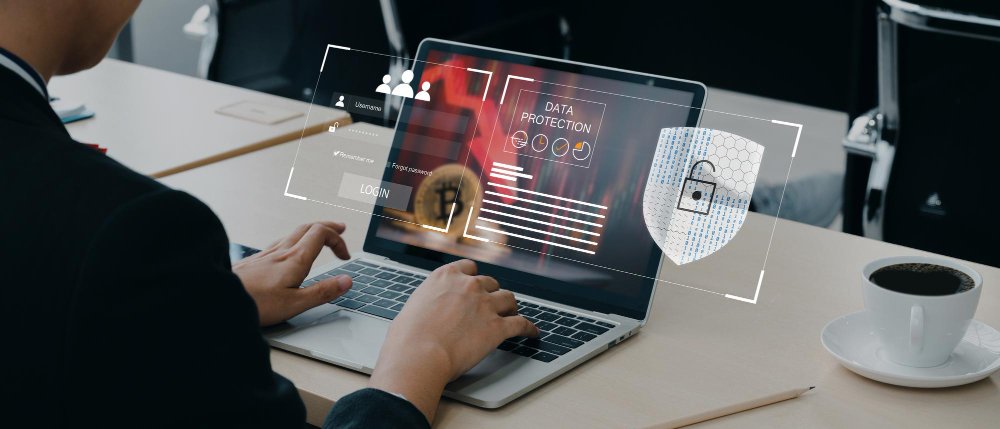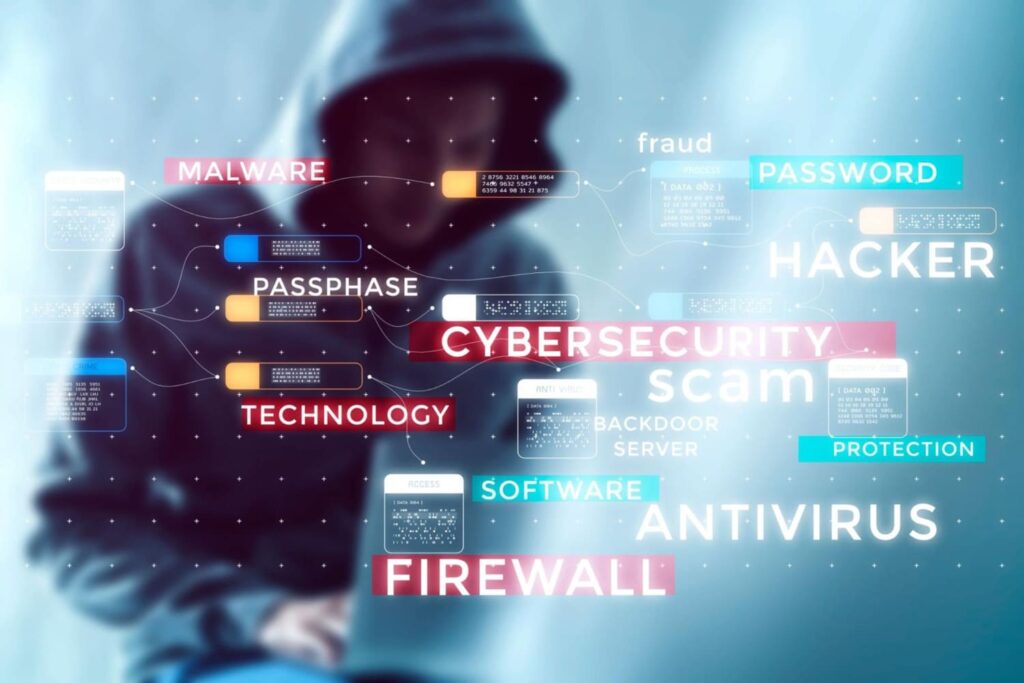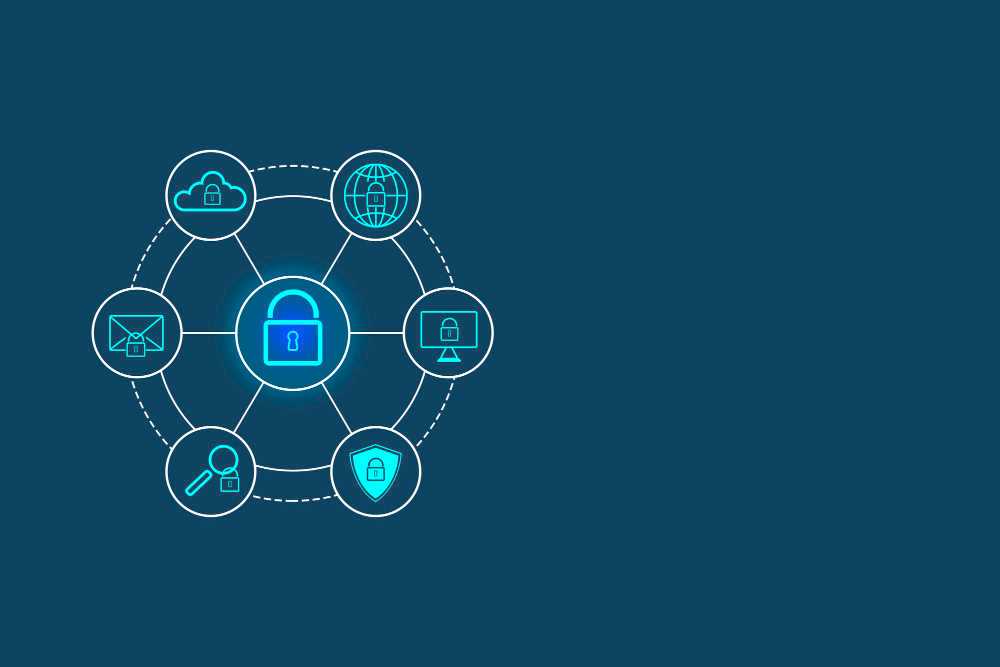
Cyber Security
Mastering Cybersecurity Risk Management in a Connected World
 Andrea Abbondanza ,
16 Jan, 2024
Andrea Abbondanza ,
16 Jan, 2024
Cybersecurity risk management has become essential to a company’s strategy to safeguard its digital assets and protect against potential threats. To ensure your data is consistently secure and not breached, it is crucial to have a well-planned security strategy in place.
So, if you want to ensure your data is secured, keep reading this article. In this post, we will learn about the importance of cybersecurity risk management and explore strategies to mitigate digital threats effectively.
Let’s start!
What Is Cybersecurity Risk Management?

Cybersecurity risk management (CRM) is part of the vulnerability risk manager (VRM). It’s a process to manage and mitigate potential risks and threats to an organization’s digital infrastructure, data, and operations. The ongoing process involves identifying, assessing, and prioritizing risks, as well as implementing measures to address them effectively. The goal is to protect the organization’s assets and ensure uninterrupted operations despite evolving cyber threats, through mitigation efforts.
This security risk management is holistic work, meaning all team members, departments, and stakeholders are involved. This approach ensures that every aspect of the organization’s operations is considered in relation to cybersecurity, from technical measures to employee training and awareness.
The Cybersecurity Risk Management Process

Now, let’s delve deeper into cybersecurity risk management, which involves risk framing, risk assessment, and monitoring. Read on!
Risk framing
Framing the risks that could affect a system should be done early because potential threats can occur unexpectedly. This is why risk framing, which involves defining the context for making risk decisions, is essential.
When risks are framed early on, companies can synchronize their risk management strategies with their broader business strategies. This alignment helps avoid expensive errors. Organizing these risks makes them easier to handle and reduces the effort needed for mitigation.
To set up risk management properly, a company should figure out a few things: the risk management process they will use, which assets are most important, what resources the company has, and what legal rules apply. Getting this info straight helps the company know exactly how to handle cybersecurity risks effectively.
Risk assessment
Risk assessment is the process of identifying threats and vulnerabilities in a system. This helps organizations understand how these risks could affect them and decide which ones to focus on first for protection. Besides threat and vulnerability, this process also defines the potential impact, which is essential for determining the severity of each risk and prioritizing them accordingly.
The result of risk framing before helping the assessment ensures that the risks are understood within the broader context of the organization’s goals and strategies. It’s aiding in more effective risk prioritization and management.
Responding to risk
After doing the risk framing and assessment, a company will have a comprehensive view of its risk management landscape, which includes prioritized data, available resources, potential threats, and the potential impacts of these threats. This comprehensive understanding is crucial for deciding how to respond to risk.
The higher the impact of the risk, the more severe its potential consequences are for the company. This means that risks with a higher impact require greater attention and resources to manage effectively. Typically, companies respond to these risks through risk mitigation, risk remediation, and risk transfer strategies.
Monitoring
After completing all the necessary steps for risk management, an organization verifies its new security controls to ensure they function as intended. They also need to keep an eye on the bigger picture of potential threats and their IT environment.
Changes in these areas, such as new threats or new IT assets, can create new vulnerabilities or make previously effective controls ineffective. This is why keeping a watchful eye helps the company to adjust its cybersecurity program and risk management strategy almost immediately.
What are the Benefits of Cybersecurity Risk Management?

As everything is becoming more digitalized now, having strong cybersecurity is a must. By doing the proper cybersecurity risk management, companies can protect themselves from various cyberattacks, like ransomware, data breaches, phishing, and many more.
Effective cybersecurity risk management allows continuous monitoring and evaluation of the organization’s security status to spot weaknesses. With a well-made plan, an organization can deal with these risks daily, enabling decision-makers to gauge the likelihood of potential cyber-attacks.
In summary, the benefits of cybersecurity risk management include:
- Quick detection and handling of cybersecurity risks
- Lowered chances of vulnerabilities
- Safeguarding the company’s reputation
- Improved assistance for the IT team
- Avoidance of financial losses
Standards and Frameworks That Require a Cyber Risk Management Approach

There are several frameworks that contain the best practices for risk management. Here is our compiled list of frameworks and standards for your reference.
NIST Cybersecurity Framework Version 1.1
The NIST Cybersecurity Framework (CSF) is a collection of guidelines, best practices, and standards that help organizations manage and enhance their cybersecurity position. It consists of a set of 108 recommended security actions that cover various aspects of cybersecurity.
One of the key objectives of the NIST CSF is to reduce the cyber risk of all types, including but not limited to malware, password theft, phishing attacks, DDoS attacks, traffic interception, social engineering, and others. By following the recommendations outlined in the framework, organizations can enhance their resilience against a wide range of cyber threats.
The framework also includes a section that details what needs to be included within a risk management strategy. This section guides how organizations can develop and implement effective risk management processes to identify, assess, and manage cybersecurity risks.
Additionally, the NIST CSF emphasizes the importance of supply chain security. It asks organizations to establish and implement processes to identify, assess, and manage supply chain risks. This is crucial in today’s interconnected business environment, where organizations often rely on third-party vendors and suppliers for various products and services that can introduce additional cybersecurity risks.
NIST Risk Management Framework
The NIST Risk Management Framework (RMF) is a comprehensive set of guidelines and processes developed by the National Institute of Standards and Technology (NIST) to help organizations manage risks associated with information security, privacy, and cyber supply chain activities throughout the system development life cycle (SDLC).
One of the key features of the NIST RMF is that it integrates security, privacy, and cyber supply chain risk management activities into the SDLC. This means that these critical aspects are considered and addressed at every stage of a system’s development and operation.
The framework is designed to be applied to both new and legacy systems and any type of system or technology, including emerging technologies like Internet of Things (IoT) devices and control systems. This flexibility makes the NIST RMF adaptable to the evolving landscape of cybersecurity threats.
The NIST RMF outlines a systematic approach to managing risks, with key steps laid out in the framework. These steps include preparing, categorizing, selecting, implementing, assessing, authorizing, and monitoring. By following these steps, organizations can systematically manage risks and secure their systems.
ISO/IEC 27001:2013
ISO/IEC 27001:2013 is a global standard for managing information security systems (ISMS) that was published by the International Organization for Standardization (ISO) and the International Electrotechnical Commission (IEC). It provides a framework for organizations to establish, implement, maintain, and continually improve an ISMS, a systematic approach to managing sensitive company information to remain secure.
Clause 6.1.2 of ISO/IEC 27001:2013 specifically addresses the need for organizations to assess risks associated with their information security. A security risk assessment management must:
- Establish and maintain information security risk criteria;
- Ensure that repeated risk assessments produce consistent, valid, and comparable results;
- Identify risks associated with the loss of confidentiality, integrity, and availability of information;
- Analyze and evaluate information security risks
DoD RMF
The Department of Defense (DoD) uses a structured process called the Risk Management Framework (RMF) to assess and manage cybersecurity risks. It provides a disciplined and structured approach to identifying, prioritizing, and managing risks associated with information systems and their operations within the DoD.
The DoD RMF consists of six key steps: categorize, select, implement, assess, authorize, and monitor. The goal is to ensure that DoD systems are adequately protected against cyber threats and that any potential vulnerabilities are identified and addressed in a timely manner.
FAIR Framework
The Factor Analysis of Information Risk (FAIR) framework is a method that helps businesses measure, analyze, and understand information risks in a quantitative way. It provides a structured approach to risk analysis that allows organizations to assess and prioritize their risks based on their potential impact and likelihood of occurrence.
The FAIR framework guides businesses through the process of making well-informed decisions by providing a common language and model for understanding and communicating about risk. It allows organizations to quantify their risks in financial terms, which enables them to prioritize their risk management efforts and allocate resources more effectively. By using the FAIR framework, businesses can gain a clearer understanding of their risk exposure and make more informed decisions about how to manage their risks.
Frequently Asked Questions
Why is Cybersecurity Risk Management Important?
Cybersecurity risk management is essential for businesses to protect their sensitive data and information systems from cyber threats. It helps assess the current cybersecurity risk profile, reduce the level of risk, address vulnerabilities, and protect sensitive data and information systems from cyber threats.
What role does employee training play in mitigating cybersecurity risks within an organization?
Raising awareness about potential threats and best practices for maintaining security. Well-trained employees are better equipped to identify and report suspicious activities, avoid falling for phishing scams or social engineering attacks, and follow security protocols effectively.
How does the evolving landscape of cyber threats impact the need for effective risk management strategies?
As cyber security threats become more advanced and diverse, organizations must continually adapt their risk management strategies to address these evolving challenges effectively.
Conclusion
If a company or organization wants its data systems to be secured and free from unauthorized access or cyber-attacks, it must prioritize implementing robust cybersecurity measures, including proper cybersecurity management.
We’ve already discussed many aspects of this risk management, and one thing is sure: a proactive approach to cybersecurity is essential in today’s digital landscape.
Regular security assessments, employee training, and staying updated with the latest threats are crucial for maintaining a secure data environment.
Looking for help with your organization’s cybersecurity plan? Get in touch with Fluxgate today!







